Join More Than 50,000+ Subscribers and get latest camera news and rumors
NEW CAMERA VIDEOS ON YOUTUBE
|
By admin, on January 25th, 2025
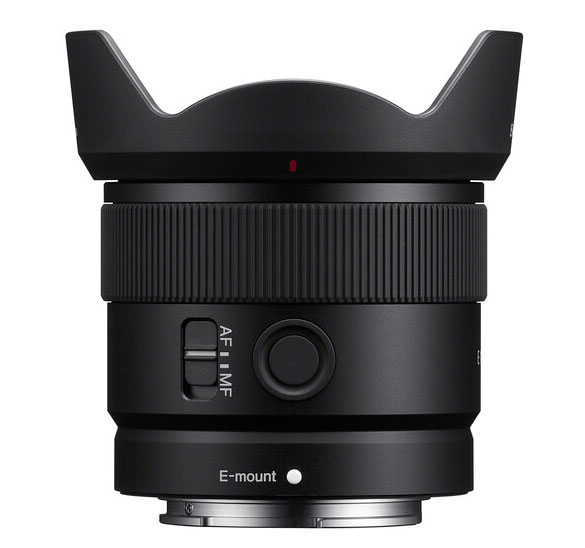 Image of Sony 11mm APS-C Lens image file As we have discussed earlier, Sony is releasing two new lenses and two new cameras. Let’s first discuss these two lenses. Then, we will discuss the cameras we have already discussed in the previous post.
Sony FE 16mm F1.8
The first is the vlogging-friendly 16 mm f/1.8 lens. This particular lens is a budget f/1.8 lens developed for full-frame sensor-based cameras. We already weigh the VILTROX 16 mm f/1.8 lens. That being said, the upcoming Sony lens is more compact and looks very similar to their APS-C line of compact lenses, like maybe the 11 mm f/1.8. The next thing Sony is working on is a budget telephoto zoom lens for wildlife and landscape photographers.
Sony FE 400–800 mm f/6.3–8.0 lens
We already have Sony’s 200–600 mm lens, and this will be an extended edition in the same series, where you can reach from 400 to 800 mm. This new lens will undoubtedly become more popular over time due to its reach. Wildlife photographers and bird shooters love to have a lens beyond 600 mm to capture details more closely, and if a lens option like 400–800 mm is available, anyone would surely pick this lens instead of getting a 200–600 mm.
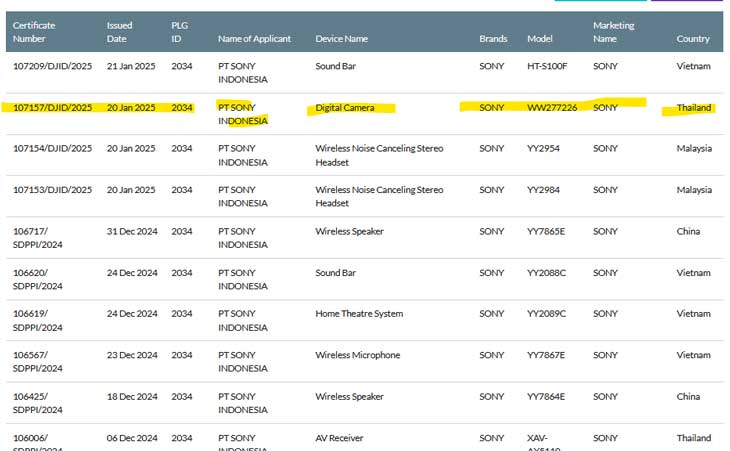
Sony Upcoming Camera Model Codes 2025
1. WW 773396 – Sony A7 V [Registered on December 5th, 2024]
2. WW277226 – Model Name Unknown [Registered on January 21st, 2025]
Stay tuned more updates coming
Follow us on our social pages FACEBOOK | TWITTER | INSTAGRAM, If you have time –>see more Sony Alpha Rumor
source – SAR.com
By admin, on January 23rd, 2025
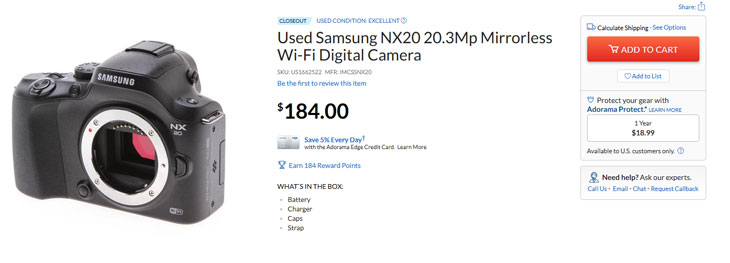
Adorama is selling out a Used Samsung NX20 camera in Excellent condition at $184 ONLY, but its BODY only. So, if you already own NX series lenses then for sure its a good deal for you Visit Adorama.com to grab the deal
Samsung NX20 Features
20.3 Mp Image Capture
Large (23.5 x 15.7mm) APS-C Image Sensor
Full HD 1080p Video Capture
Instant Sharing via Wi-Fi
Clear 3.0″ AMOLED Swivel Display
High Speed 8.0 fps Capture
Smart Auto and Filter 2.0
2D/3D Panorama
Bundled Flash
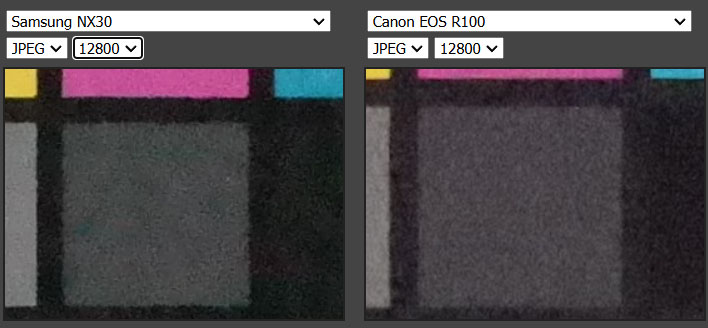
Samsung NX20 was announced in 2012, but still able to compete against canon R100 camera in HIGH ISO test
By admin, on January 21st, 2025

Sony registered a new camera with the wireless certification agency, and the model code of the camera is WW277226. What we are expecting for now is the Sony A7 V camera, since if we pick up the rumors we just published recently [ Sony A7V surfaced at wireless certification agency and Sony A7 V and Sony 50-105mm F2.8 Lens Coming], it all indicates that Sony is planning to announce the A7 V camera in early 2025, as per the Sony rumor mill that the announcement may happen in March 2025. Generally, whenever camera makers like Sony, Nikon, or Canon register a camera with the wireless certification agency, they take 2–3 months to announce their product in the market. And since the Wireless certification details of the Sony A7V camera surfaced back in December it’s quite obvious that the camera is expected to arrive in March 2025.
Now about WW277226 – it’s one more camera in the two, WW277226 is not Sony A7V it’s something else although the name isn’t known yet. But since it has been surfaced today [on January 21st, 2025] the announcement of the Next ALPHA camera after the Sony A7V is expected sometime in April-May 2025.
Sony Upcoming Camera Model Codes 2025
1. WW 773396 – Sony A7 V [Registered on December 5th, 2024]
2. WW277226 – Model Name Unknown [Registered on January 21st, 2025]
We will update you when we get any new information about the upcoming Sony A7 V camera.
Check out more
Wild Rumors: Sony FX30 II, Sony FX30 R and Sony ZV-E1 II Coming in 2025 | Sony Upcoming Cameras 2025
Follow us on our social pages FACEBOOK | TWITTER | INSTAGRAM, If you have time –>see more Sony Alpha Rumor
By admin, on January 20th, 2025
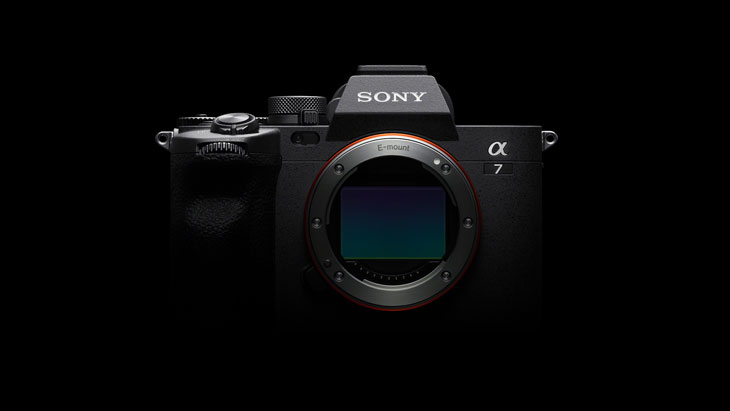
According to the latest, Sony will announce the FE 50-105 F2.8 lens at the end of February 2025. At the same time, Sony is highly likely to announce the Sony A7 V camera in March 2025.
We have gathered a lot of information about the Sony A7 V camera in the past [check all updates here Sony A7 V], and the latest set of details suggests that the camera may feature a 44-megapixel sensor. However, in the past webio (Chinese sources) suggested that there is also the possibility of a 33-megapixel stacked CMOS sensor. So, if we concentrate on all the information received over the past year, it creates two possibilities: either the camera will come with a 44 MP BSI CMOS sensor or a 33 MP stacked CMOS sensor.
Again, we are waiting for further confirmation. If received, we will post an update very soon.
Check out more
Wild Rumors: Sony FX30 II, Sony FX30 R and Sony ZV-E1 II Coming in 2025
Follow us on our social pages FACEBOOK | TWITTER | INSTAGRAM, If you have time –>see more Sony Alpha Rumor
source – SAR.com
By admin, on January 20th, 2025
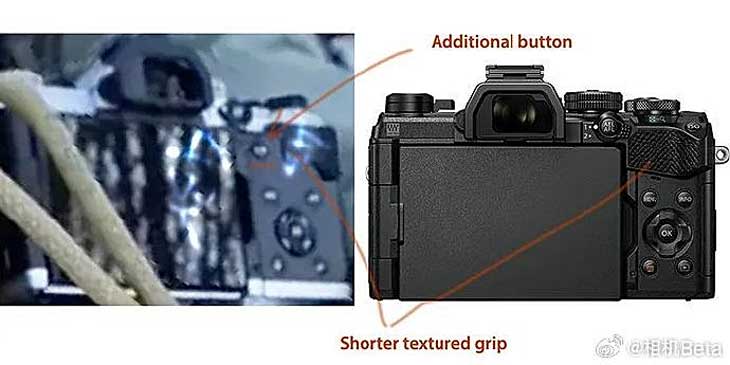 The image surfaced of the upcoming Olympus camera Olympus new camera announcement is about to happen in February 2025, we now have the leaked specifications of the upcoming cameras via a trusted rumor mill, the name of the camera is said to be OMD OM3, but the name of the upcoming camera isn’t been confirmed yet
Olympus OMD OM-3 Specification
– Same 20MP sensor
– Metal body
– Price around $1500
– Rumored to be officially announced at CP+ in February 2025
– Various color profiles for video, similar to Fujifilm’s simulations
– Based on the OM-1
Stay tuned we will post detailed specifications and images, as soon they become available to us
STAY WITH ON FACEBOOK | TWITTER | INSTAGRAM, to get live news + Olympus Rumors 24X7
source 43addict
By admin, on January 18th, 2025
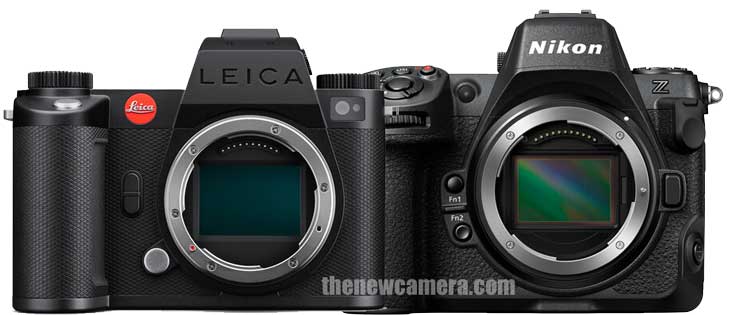
Nikon Z8 versus Leica SL-3 S: Which is the Best Camera Among These Two? If you are planning to buy the Leica SL3 S camera, you must first look at the Z8 core specification comparison table before making a decision.
Design Comparison
| Feature |
Nikon Z8 |
Leica SL3-S |
| Lens Mount |
Nikon Z |
L-Mount |
| Build Material |
Magnesium Alloy |
Aluminum, Magnesium Alloy |
| Dimensions (W x H x D) |
5.7 x 4.7 x 3.3″ (144 x 118.5 x 83 mm) |
Not Specified |
| Weight |
2.0 lb (910 g, with battery and recording media) |
4.715625 lb / 2139 g (With Battery)
1.7 lb / 768 g (Body Only) |
| Display Type |
3.2″ 4-Axis Tilting Touchscreen LCD, 2,100,000 dots |
3.2″ Tilting Touchscreen LCD, 2,332,800 dots |
| Viewfinder Type |
0.5″ OLED, 3,690,000 dots, Approx. 0.8x Magnification |
OLED, 5,760,000 dots, Approx. 0.76x Magnification |
| Eye Point |
23 mm |
21 mm |
| Weather Sealing |
Yes |
Yes |
| Wireless Connectivity |
Wi-Fi 5 (2.4 / 5 GHz), Bluetooth 5.0 |
2.4 GHz MIMO Wi-Fi, Bluetooth 5.0 |
| Dual Card Slots |
CFexpress Type B / XQD + SD (UHS-II) |
1x CFexpress Type B, 1x SD (UHS-II) |
| GPS |
Yes (via smartphone) |
Yes (via smartphone) |
Which camera is better for longer hours of work, like weddings and events lasting hours, the Leica SL3 S or Nikon Z8?
In the design comparison, it is visible that the Leica is built like a tank, heavier, but at the same time, the electronic viewfinder and the display part of the camera are of more premium quality. For more prolonged shooting, such as during weddings and events lasting over 7-8 hours or more, it’s recommended to hold a camera that makes you comfortable for longer hours of work, like the Nikon Z8.
Photography Comparison
| Feature |
Leica SL3-S |
Nikon Z8 |
| Sensor Resolution |
24.6 MP (Effective) |
45.7 MP (Effective) |
Sensor Tech
|
BSI CMOS |
STACKED BSI CMOS |
| Sensor Type |
Full-Frame |
Full-Frame |
| ISO Range |
100 to 200,000 (manual) |
64 to 25,600 (Extended: 32 to 102,400) |
| Continuous Shooting |
Up to 30 fps |
Up to 20 fps Raw, 30 fps JPEG Shooting |
Image Stabilization
|
Upto 5 – Stops (max) |
5.5 (Max 6 Stops with VR Lens) + AI IS |
| Autofocus Points |
779 Points (Phase + Contrast Detection) |
493 Points (Phase Detection Only) + AI AF tracking Modes |
| White Balance Options |
Auto, Cloudy, Color Temp, Daylight, Flash, Fluorescent, Manual |
Auto, Cloudy, Direct Sunlight, Flash, Fluorescent, Incandescent, Custom |
| Shutter Speed |
Mechanical: 1/8000 to 30 sec; Electronic: 1/16000 to 60 sec |
Electronic: 1/32000 to 30 sec; Bulb Mode Supported |
| Metering Modes |
Center-Weighted, Highlight Weighted, Multi-Zone, Spot |
Center-Weighted, Highlight Weighted, Matrix, Spot |
| Aspect Ratios |
3:2, 16:9, 17:9 |
1:1, 3:2, 16:9 |
| Image File Format |
DNG, JPEG |
JPEG, RAW |
| Bit Depth |
14-Bit |
14-Bit |
| Self-Timer |
2/5/10/20-Second Delay |
2/5/10/20-Second Delay |
| Built-In ND Filter |
No |
No |
| Capture Type |
Stills & Video |
Stills & Video |
In the comparison of photographic core specifications, the best part is the Nikon Z8 camera, which has a 45-megapixel BSI CMOS sensor. Along with that, the Nikon Z8 also features AI Autofocus modes that come directly from the Nikon Z9. The best part is that in continuous shooting mode, even at the full 45-megapixel resolution, you can capture 30 frames per second without any issues.
Detailed AF System Comparison
| Aspect |
Nikon Z8 |
Leica SL3-S |
Conclusion |
| Sensor Type |
Stacked CMOS, faster readout |
BSI CMOS (non-stacked), slower readout |
Slower AF in burst and video due to non-stacked sensor. |
| AF Points |
493, with 405 Auto-area, efficient algorithms |
779 PDAF, less optimized processing |
More points, but less effective due to inferior algorithms and processing. |
| Subject Detection |
Mature, hierarchical (e.g., eyes, body) |
Beta for animals, less precise |
Less reliable tracking, especially for complex subjects like wildlife. |
| Low Light AF |
Excellent, reliable in extreme low light |
Struggles in extreme low light |
Less versatile for low-light scenarios, limiting use cases. |
| Burst Shooting with AF |
20 fps, large buffer, sustained performance |
15 fps, buffer fills quickly |
Misses shots in fast action due to buffer limitations. |
Conclusion
The Nikon Z8’s AF system is superior to the Leica SL3-S’s due to its stacked sensor, advanced algorithms, mature subject detection, better low-light performance, and higher burst shooting capabilities. While the SL3-S has more AF points, its overall AF system is inferior because it lacks the speed, precision, and reliability of the Z8’s system. These differences make the Z8 a better choice for photographers prioritizing autofocus performance, especially in demanding conditions like sports, wildlife, and low-light photography.
Leica is more of a bit retro and classical type camera, and it is limited to a traditional 24-megapixel BSI CMOS sensor that we have seen in the Panasonic S5 II. Although the number of autofocus points is much lower compared to the Nikon Z8, it doesn’t feature any AI autofocus tracking hardware that we have in the Z8. But again, if you are a Leica user, then you may prefer having a Leica camera, as Leica’s color science is quite different from Nikon’s.
If you compare the core specifications, the Nikon Z8 is undoubtedly the clear winner in the competition.
Video Comparison
| Feature |
Leica SL3-S |
Nikon Z8 |
| Max Resolution |
UHD 6K (5888 x 3312) |
UHD 8K (8256 x 4644) |
| Frame Rates (Max) |
4K at 60 fps [Crop] |
4K at 120 fps [Crop] |
4k 60 FPS
|
Yes, Cropped |
Uncropped |
| Slow Motion |
No |
Yes |
| Video Formats |
H.264, H.265 (4:2:0/4:2:2 8/10-Bit), ProRes 4:2:2 |
ProRes RAW HQ, H.265 4:2:2, H.264 4:2:0 |
| Internal Recording |
10-Bit 4:2:2 |
ProRes RAW HQ 12-Bit |
| External Recording |
4:2:2 12-Bit via HDMI |
12-Bit via HDMI |
| Audio Formats |
AAC, LPCM |
24-Bit LPCM |
| Gamma Curves |
Rec709, Rec2020 |
HDR-HLG |
| Recording Limit |
No |
No |
| IP Streaming |
No |
No |
| Built-In Microphone |
Stereo |
Stereo |
| Autofocus Points (Video) |
779 Points |
493 Points + AI AF modes Active |
| Heat Dissipation |
Passive |
Passive |
| Maximum Bitrate |
600 Mbps |
Up to 5780 Mbps (8K ProRes RAW) |
Which camera is better for professional photography use, the Nikon Z8 or the Leica SL3 S?
It’s very clear from the beginning of the comparison table that the Nikon Z8 camera is able to capture 8K videos and offers 4K video recording up to 120 frames per second. So, technically, the Nikon Z8 is quite a bit more advanced. At the same time, the Z8 camera also offers the ability to record high-quality 12-bit internal RAW video. Due to its nature and the very angle display screen, you can also create content with the camera if you like to follow platforms like YouTube.
Does the Leica SL3 S camera offer better video features compared to the Nikon Z8?
The Leica SL3 S camera does have a limited set of videography specifications and features, such as a tilting display screen on the back. However, if you have specific videography needs, the Nikon Z8 is superior.
Which camera offers more value for the price, the Nikon Z8 or the Leica SL3 S?
Among the two, as per the set of core specifications, the Nikon Z8 looks very promising and is more advanced compared to the Leica SL3 S for the price you’re paying. But if you are a Leica enthusiast and would love to buy a Leica camera, then you can still go with the Leica SL3 S if you wish to.
Here you can purchase online B&H Store | Adorama | Amazon.com |
By admin, on January 18th, 2025

The new Camera’s back image clearly shows that the button layout is similar to the OM-5, and there is one more button in the position of the dial. Current products do not have a similar design. The leaked image indicates that the new machine may be named OM-3 (not yet finalized).
STAY WITH ON FACEBOOK | TWITTER | INSTAGRAM, to get live news + Olympus Rumors 24X7
source webio
|
KEEP THIS BLOG ALIVE - Support New Camera Buy Canon Lenses, Buy Music CD or Digital Camera at amazon it helps this site, and you do not pay anything extra, it is just a way to help support this site.

|












